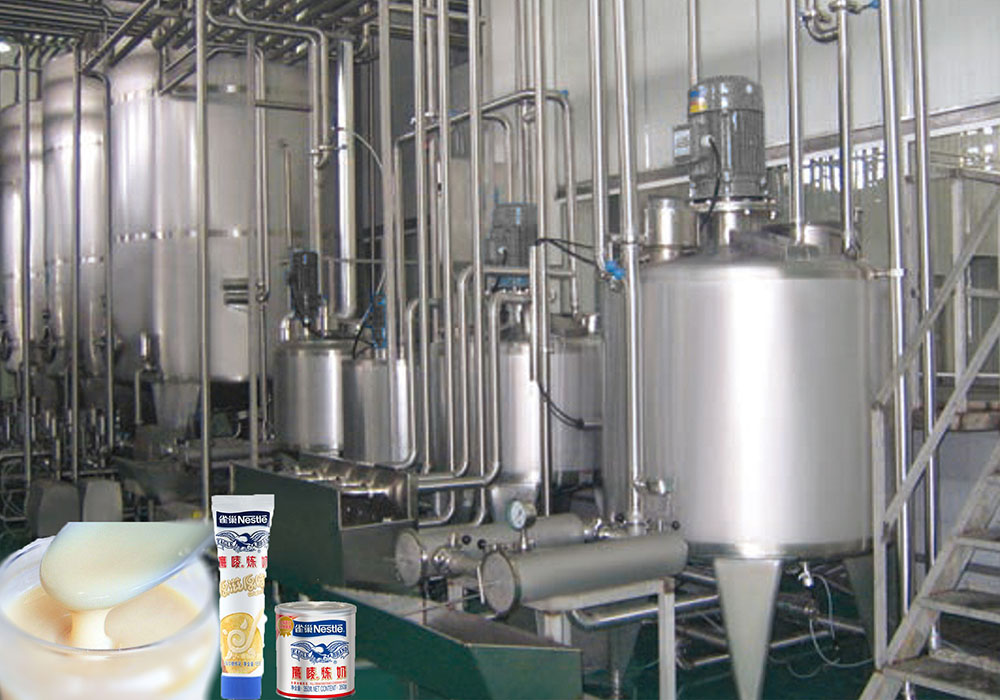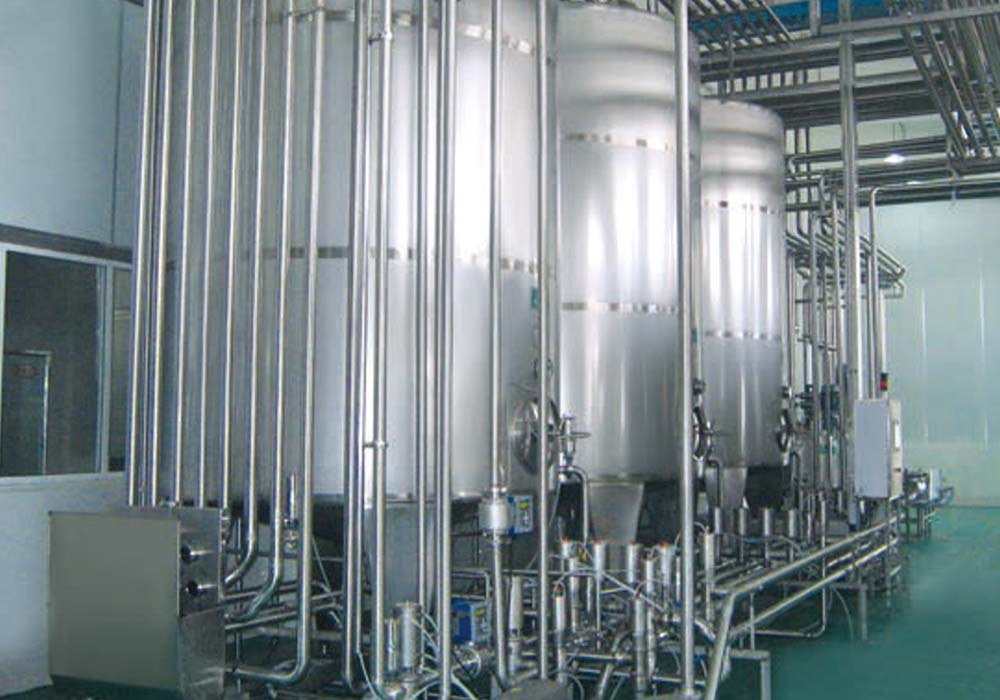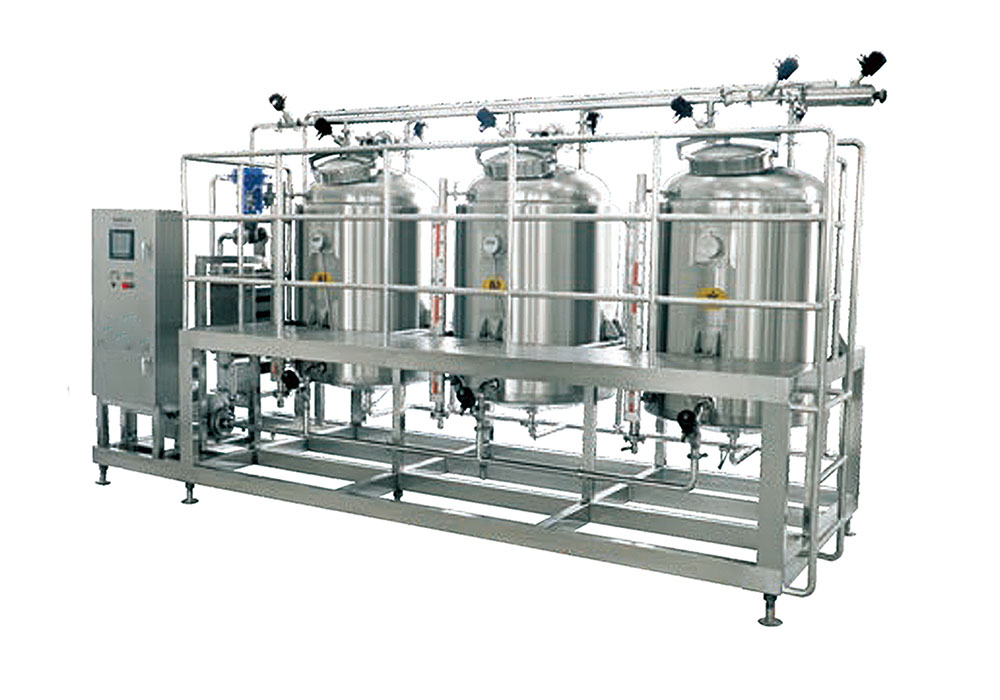- Tel: 0086-21-37901188
- E-mail: info@triowin.com
- whatsapp: +8613301885621
- wechat: 13301885621
A process line for sweetened condensed milk manufactured from fresh milk.
Figure below shows a process line for sweetened condensed milk manufactured from fresh milk. Before evaporation, the fat and solids-non-fat values of the milk have been standardised to predetermined. The milk has also been heat treated to destroy micro-organisms and enzymes which could cause problems and to stabilise the protein complex. Heat treatment is also important to the development of product viscosity during storage, and is particularly important in the case of sweetened condensed milk. The addition of sugar is a key step in the manufacture of sweetened condensed milk, as the shelf life of the product depends on its osmotic pressure being sufficiently high. A sugar content of at least 62.5% in the aqueous phase is required. Two methods are used for addition of sugar:
•Addition of dry sugar before heat treatment
•Addition of sugar syrup in the evaporator
The stage at which the sugar is added affects the viscosity of the end product. The evaporator is usually of the multistage falling-film type. When sugar is added in the evaporator, the syrup is drawn into the evaporator and mixed with the milk at the half-way stage of the process. Evaporation then continues until the required dry matter content has been reached. The dry matter content is checked continuously by determining the density of the concentrate.
Sweetened condensed milk must be cooled after evaporation. This is the most critical and important stage in the whole process. The water in the condensed milk can only hold half the quantity of lactose in solution. The remaining half will therefore be precipitated in the form of crystals. If the surplus lactose is allowed to precipitate freely, the sugar crystals will be large and the product will be gritty and unsuitable for many applications. It is consequently preferable to control the crystallisation of lactose so that very small crystals are obtained. The required crystallisation is accomplished by cooling the mixture rapidly under vigorous agitation, without air being entrapped. The cooled condensed milk is pumped to a storage tank where it is kept until the following day to allow the crystallisation process to be completed.
Sweetened condensed milk should be yellowish in colour and have the appearance of mayonnaise. Traditionally, it is packed in cans, which in this case must be cleaned and sterilised before filling as no sterilisation takes place after canning. Nowadays it is also possible to pack sweetened condensed milk in aseptic paperboard packages. The product is also packed in big barrels, holding about 300kg, for supply to large-scale users.
Advantages
* Opportunity to realize products with customized recipes.
* Opportunity to produce more than one product with the same processing line.
* High quality of the final product keeping an elevated nutritional value.
* Wide customization of the final product.
* Maximum yield, minimum production waste.
* Highest energy savings thanks to the most advanced technologies.
* Complete line supervision system through monitoring of every process phase.
* Recording, visualization and printing of all daily production data.
Features
|
Working capacity |
from 5 tons/d up to 100 tons/d |
|
Products |
- Sweetened condensed milk |








